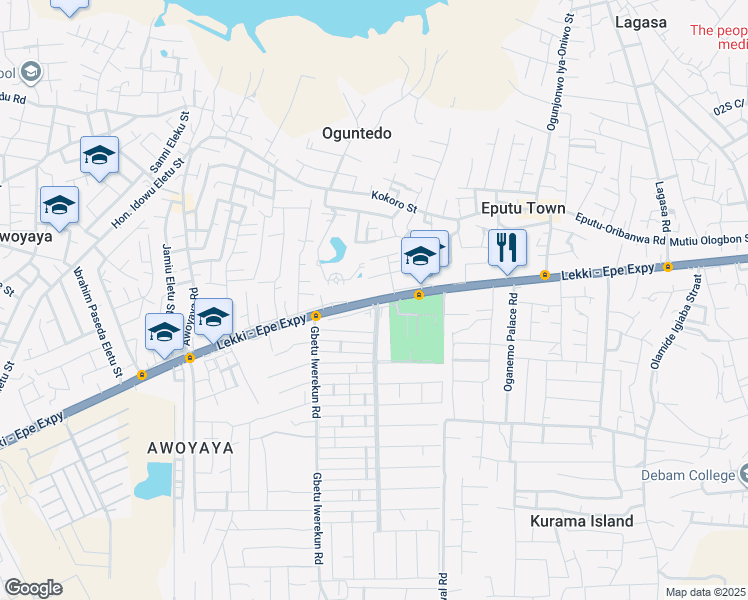,The corridor along the Lekki–Epe Expressway in Lagos (stretching from Admiralty Toll Plaza/first toll-gate to Epe junction) has been earmarked by the Lagos Metropolitan Area Transport Authority (LAMATA) and the Lagos State Government as a site for a major urban rail infrastructure: the so-called “Green Line” rail project. Nairametrics+2thesun.ng+2
While you asked about the “Blue Line rail along Lekki-Epe”, it is important to clarify: the “Blue Line” in Lagos is a separate project (running between Mile 2/Okokomaiko and Marina) lagosppa.gov.ng — the rail corridor for the Lekki-Epe axis is most commonly referred to as the “Green Line”.
Here’s a write-up summarizing the current status, purpose, design & implications of the rail project along the Lekki-Epe Expressway corridor.
Purpose and Rationale
The Lekki-Epe corridor is one of the fastest-growing urban and suburban zones in Lagos: expanding residential, commercial, light industrial development, and planned major infrastructure (e.g., Lekki Free Trade Zone). The expressway connecting this axis is heavily congested and is expected to get even more traffic. A dedicated rail line is seen as a key means to:
- relieve road congestion, especially for commuter flows between Lagos Island/Victoria Island and Lekki/Ajah/Epe.
- provide a higher-capacity, faster mass transit alternative, thereby improving mobility, economic productivity and quality of life.
- stimulate land-use and real estate around stations, promoting transit-oriented development.
- integrate with the broader Lagos rail/metro network, aligning with the state’s planning for urban transport modal shift. For example, LAMATA’s urban transport master plan lists the rail lines including the Blue Line, Green Line etc. lamata-ng.com
Project Scope & Design Highlights
Some of the key design/plan features of the rail line along the Lekki-Epe corridor:
- The rail line (Green Line) is around 68–70 km long, running from Marina (Lagos Island) to the Lekki Free Trade Zone (and beyond) via the Lekki-Epe Expressway alignment. Nairametrics+1
- It will feature 17 stations along the route, with a mix of elevated and at-grade track. Nairametrics+1
- The first phase will cover the stretch from the Lekki First Tollgate to Epe; a second phase begins from Marina (including an on-water segment) according to recent announcements. Lagos Television+1
- The Right-of-Way (RoW) for the expressway corridor (69.1 km from Admiralty Toll Plaza to Epe junction) has been formally defined as 94 metres wide, reserved for critical infrastructure including the rail tracks. Banwo & Ighodalo+1
- Trains are expected to operate with good capacity: some sources mention designed speeds up to ~100 km/h, eight-car train sets, minimum headways of ~3 minutes, and capacity of ~35,000 passengers per hour per direction. Nairametrics
Timeline & Current Status
- As of 2025, the Lagos State Government announced that construction of the project will commence in December 2025. Lagos Television+1
- The project is planned to take 2-3 years to complete (in phases) according to the latest statements. Nairametrics+1
- The government has issued public notices to reclaim and enforce the reserved right-of-way, warn against encroachments, especially along the expressway corridor. TheCable+1
Challenges & Considerations
- Land & Encroachment Issues: Significant parts of the RoW have been encroached upon by informal or formal development. The government has had to issue warnings and start enforcement. TheCable+1
- Cost & Funding: The project is large scale (estimated at ~$3 billion) and will require substantial financing. Nairametrics
- Integration with Existing Corridors: Ensuring the rail line aligns with ongoing developments (like expressway expansions, port/deep‐sea infrastructure, real-estate) and avoids duplicative or conflicting usage.
- Environmental & Engineering Constraints: The expressway corridor passes through wetlands, coastal zones, and heavily built–up areas; hence complex engineering (e.g., elevated sections, viaducts, water crossings) may raise costs and complexity. thesun.ng
- Ridership & Value Capture: For the line to pay off socially and economically, it needs strong ridership, good station placement, feeder connectivity and effective operations. One article noted caution about station spacing and long-term demand. Nairaland
Impacts & Implications
- Economic Growth: The improved connectivity will help unlock value in the Lekki-Epe corridor, reduce commute times, enhance labour mobility and potentially stimulate new development clusters around stations.
- Traffic Decongestion: With a high-capacity rail alternative, road traffic pressure along the expressway is expected to reduce—leading to lower travel times, less fuel waste, and better environmental outcomes.
- Urban Development Pattern: Stations along the corridor can become hubs for mixed‐use development, promoting transit-oriented living and reducing sprawl.
- Social Benefits: Improved accessibility for residents in the corridor, including those travelling to central Lagos for work; better public transport reduces inequality of access.
- Infrastructure Synergies: The rail line complements other planned infrastructure in the corridor (deep-sea port, free-trade zone, airport, expressway upgrades) and could be part of a holistic transport/land‐use strategy.
Summary
In summary, the rail line along the Lekki-Epe Expressway corridor (the Green Line) represents one of Lagos’s major upcoming transport infrastructure projects. It is ambitious in scale, has the potential to transform mobility and urban development along one of the fastest-growing axes of the city, but also faces significant challenges. With the December 2025 start date, the coming months will be pivotal in translating plans into action.


